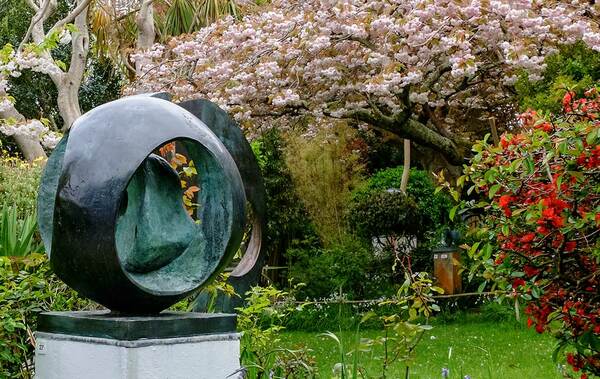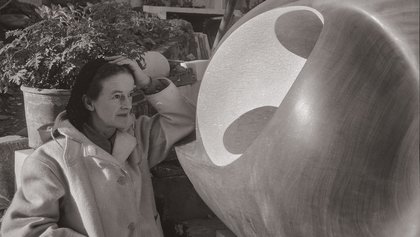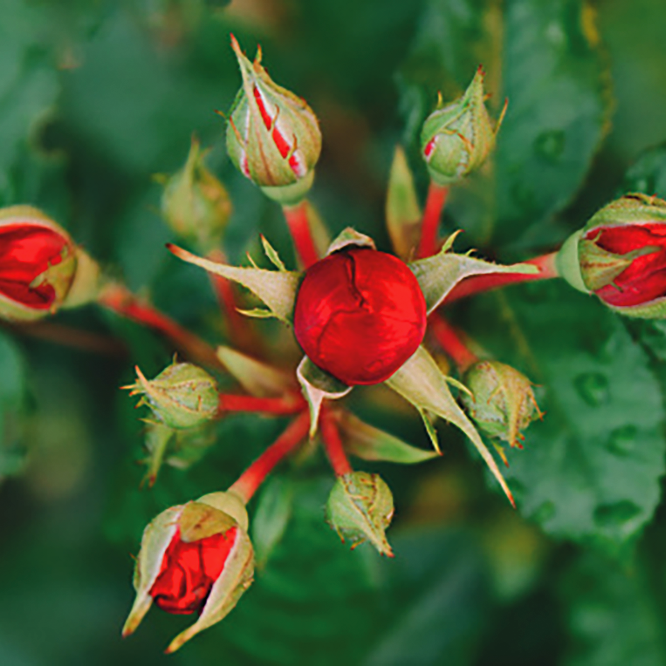THIS WEEK’S MUSE

BARBARA HEPWORTH, SCULPTOR

“My left hand is my thinking hand. The right is only a motor hand. This holds the hammer. The left hand, the thinking hand, must be relaxed, sensitive. The rhythms of thought pass through the fingers and grip of this hand into the stone.”
Barbara Hepworth was an English artist and sculptor whose innovative abstract work exemplified the Modernist movement of the mid 20th century.
As a child living in the northern hills of England, Hepworth saw the world as a “sculptural place.” Her early memories are full of forms and textures in the landscapes, often experienced from journeys in the family car. “There was the sensation of moving physically over the contours of fullness and concavities,” she remembered, “through hollows and over peaks. This sensation has never left me. I, the sculptor, am the landscape. I am the form and the hollow, the thrust and the contour.”
The landscapes changed dramatically when she moved to St. Ives on the western Atlantic coast. That inner sensation of belonging to a sculpted landscape flourished and the bright sea air, wide open ocean views, and wild weather fired her imagination and inspired her work.
Hepworth moved away from traditional realism and representative forms, and increasingly towards the abstract. She utilized a technique known as direct carving, a process by which the act of carving a particular material produces and directs the final form. It was an approach attributed to sculptor Constantin Brâncuși who asserted a “doctrine of truth” to the material itself.
The finished work, Brâncuși postulated, is uncluttered by a desire to create realism if the artist’s aim is to let the material itself help reveal the final form. “Harmony comes,” added Hepworth, “with the discovery of the most direct way of carving each material according to its nature.” Unsurprisingly the results were often highly abstract and the effect on the viewer is a shift from what they see to what they feel. “It is easy now to communicate with people through abstraction,” she wrote. “The whole body reacts to its presence; people become themselves a living part of the whole.”
Hepworth’s carvings tended to be realistic oval forms, loosely based on the shape of the human head or a bird. “Gradually,” she noted, “my interest grew towards more abstract values – the weight, poise and curvature of the ovoid as a basic form.” Her abstraction intensified when she started punching holes through her work. The material’s exterior no longer simply defined the shape of a piece but created an ever-flowing surface, moving into and out of the form – “an infinite variety of continuous curves in the third dimension.” By adding strings across the surface gaps created by the holes she represented herself and her place within the natural environment. “The strings,” she said, “represented the tension I felt between myself and the sea, the wind or the hills.”
Intellectually, these complex symbols that inform much of Hepworth’s work exemplify a modernist approach that revolutionized 20th century sculpture. On a personal level, they accentuate the relationship between an individual and their surroundings. What she would terms as the “figure in the landscape.”
HAPPENING
Tuesday, June 6, 10–11am
COFFEE & MOTHER EARTH: ROSES

With Priscilla Husband
Discover everything about the beautiful queens of the garden!
Member: $14, Non-member: $16
